Menhirs, Obelisks and Standing Stones: (Form and function).
Egyptian Obelisks.
The ‘wholesale’ appearance of menhirs began in Neolithic Europe, at around 4,000 BC, with the construction of Egyptian obelisks following close behind. While the Egyptian obelisks were carved with flat edges, European menhirs were shaped and smoothed so that with a few exceptions, the builders retained and even emphasised the natural qualities of the stones they used.
Although there are suggestions of astronomical significance at many of the larger menhirs, it by no way means that that they all had. There are several examples of prominent stones being border markers, although this is most likely to have been a secondary usage. For example, the stone at Champs Dolent, in France (right), defines the border between Brittany and Normandy, but is also part of an older (solar) landscape alignment including nearby Mont St. Michel.
- Egyptian Obelisks.
- French Menhirs.
- British Standing Stones
- Portuguese Menhirs.
- Axum, Ethiopia. (coming soon)
- Menhirs, obelisks and standing-stones gallery.
Scroll down for more…
Egyptian Obelisks.
The largest recorded menhirs of all time (obelisk’s) were all Egyptian. The two largest ancient Egyptian capital’s of Heliopolis and Karnak were marked by huge obelisks.
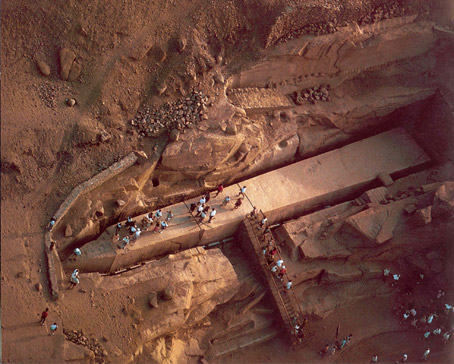 The Egyptian obsession with obelisk building led them to produce several of the largest standing stones from the ancient world.
The Egyptian obsession with obelisk building led them to produce several of the largest standing stones from the ancient world.
The largest known Egyptian obelisk is the ‘unfinished obelisk’, which was left in-situ, attached to the living rock, following the discovery of a natural fissure in the rock. The stone was carved to 120-feet (36m) in length and would have weighed over 1000 tons when complete.
Most of the largest obelisks have been ‘removed’ from Egypt and now stand at other locations around the world. Of 28 ancient Egyptian obelisks discovered only 8 large ones remain in Egypt.
The remaining eight Egyptian obelisks are:
Location of Obelisk
Pharaoh attributed to:
Details
Pharaoh attributed to:
Details
Karnak temple, Thebes.
Tuthmosis I
66-75ft – (143-160 tons).
Tuthmosis I
66-75ft – (143-160 tons).
Karnak temple, Thebes.
Hatshepsut (fallen)
97ft – (320-323 tons) – 7 months labour
Hatshepsut (fallen)
97ft – (320-323 tons) – 7 months labour
Karnak temple, Thebes.
Seti II
7m
Seti II
7m
Luxor temple, Luxor.
Ramses II
82ft – (254 tons)
Ramses II
82ft – (254 tons)
Luxor Museum.
Ramses II
Ramses II
Heliopolis, Cairo.
Senusret I
20.4m – 20.75m (120 tons)
Senusret I
20.4m – 20.75m (120 tons)
Gezira Island, Cairo
Ramses II
20.4m high. (120 tons)
Ramses II
20.4m high. (120 tons)
Cairo International Airport.
Ramses II
16.97m high. (110 tons)
Ramses II
16.97m high. (110 tons)
The following obelisks were all once Egyptian. They are now located at significant sites around the world.
Location of Obelisk.
Pharaoh attributed to.
Details.
Pharaoh attributed to.
Details.
Lateranense, Vatican city, Rome.
Tuthmosis III / IV
32.18m high (weight – 330 tons) (4m lost during 1587 restoration)
Tuthmosis III / IV
32.18m high (weight – 330 tons) (4m lost during 1587 restoration)
Vaticano, St. Peters square, Rome.
Nebkaure Amenemhat II ??
25.5m high, 320 tons
Nebkaure Amenemhat II ??
25.5m high, 320 tons
Flaminio, Piazza del Popolo, Rome.
Seti I – Ramses II
24m high, (235+ tons.)
Solare, Piazza di Monteciterio, Rome.
Psammetichus II
21.79m high, (230 tons)
Psammetichus II
21.79m high, (230 tons)
Square of Horses, Istanbul, Turkey.
Tuthmosis III
19.6m high. (weight – 175 tons) (Bottom 10.4m lost – orig: 380-400 tons)
Tuthmosis III
19.6m high. (weight – 175 tons) (Bottom 10.4m lost – orig: 380-400 tons)
Place de Concorde, Paris. France.
Ramses II
23m (74ft) high (weight 227-250 tons)
Cleopatra’s needle, London.
Tuthmosis III
20.87m (69ft) high (weight 187+ tons)
Tuthmosis III
20.87m (69ft) high (weight 187+ tons)
Cleopatra’s needle, New York.
Tuthmosis III
21m (70ft) high (weight 193+ tons)
Tuthmosis III
21m (70ft) high (weight 193+ tons)
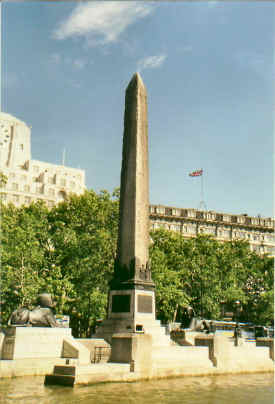
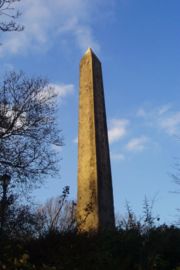
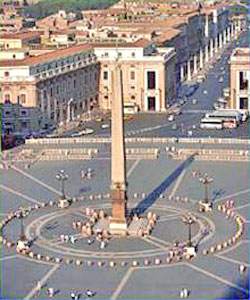
Cleopatra’s Needle, London.
Place de Concorde,Paris.
Cleopatra’s needle, New York.
Lateran Obelisk, Vatican City.
Place de Concorde,Paris.
Cleopatra’s needle, New York.
Lateran Obelisk, Vatican City.

Heliopolis.
The obelisk at Heliopolis (On, Annu) in Egypt, represented the very epicentre of sun worship in early dynastic Egypt. Many of the most significant (3rd to 6th dynasty) pyramids were built so as to produce corner alignments with Heliopolis.
The obelisk at Heliopolis was erected by Sesostris I at around 2,433 BC (Brugsch). The orientation of the obelisk led Lockyer to suggest that Heliopolis may have been constructed over an older temple which was first used for observations of Dubhe (Ursae Majoris). In which case ‘the original foundation stone was laid about 5,100 BC‘ (2)
At 30° 04’ N, 31° 30’ E, Heliopolis is geodetically more accurately located than Giza. It is almost exactly 4° south and 5° west of Heliopolis (Baalbek – 34° 03’ N, 36° 10’ E), in Lebanon.
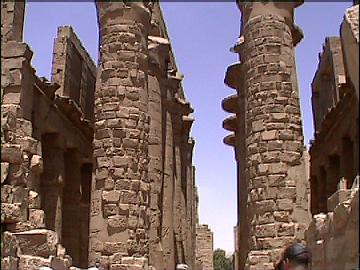
Karnak - The huge temple complex at Karnak was shown by Lockyer (2) to have a solar orientation (aligned to the summer solstice sunrise), which was marked out by several of the largest obelisks in Egyptian history.
The temple of Amon Ra at Karnak was considered the geodetic navel of of ancient Egypt. It is located exactly 2/7th’s of the way from the Equator to the pole. Other ancient sites also appear to conform to this theory such asDelphi (3/7th’s), and the Silbury/Avebury complex (5/7th’s).
Menhir Facts:
Menhirs and standing stones in Europe were placed into the ground, which means that they are obviously considerably longer than they appear.
It is reasonable to include an extra 20% in length below the ground.
An attempt to straighten the two stones called ‘The Cove’ at Avebury in 2003, revealed the fact that one of the stones, which stands 14ft (4.4m), above the ground, also exists at least 7ft (2.2m) below the ground (reaching a possible 10ft /3m deep). The weight of the stone is now calculated at around 100 tons.
Refs: Daily Telegraph News (8 April 2003); The Scotsman (17 April 2003), The Guardian (18 April 2003)
French Menhirs.
Although the largest known French menhir (Le Grand Menhir Brisé) in Morbihan, has now fallen, France still possesses several of the largest standing menhirs in the world. They are a tribute to the builders skill and determination. The largest upright menhir in France today is the Kerloas menhir, which stands at 9.5m.
The Top 15 Menhirs in France: All in Brittany
Menhirs are found in all countries which abound in megalithic structures. In France over 1600 isolated examples have been recorded, of which about the half, and by far the most remarkable, are within the five departments which constitute Brittany. Over the rest of France they are generally small, and not to be compared in size to those of Brittany. At Lochmariaquer, Morbihan, is the largest menhir in the world. It was in the form of a smooth-sided Obelisk, but now lies on the ground broken into four fragments, the aggregate length of which amounts to 20.50 metres (about 67 ft.). It was made of granite foreign to the neighbourhood, and its weight, according to the most recent calculations, amounted to 347,53 1 kilogrammes, or 342 tons (L’Homme, 188 5, p. 1 93). The next largest menhir is at Plesidy (Cotes-du-Nord)), measuring about 37 ft. in height. Then follows a list of sixty-seven gradually diminishing to 16 ft. in height of which the first ten (all above 26 ft.) are in Brittany. As regards form these menhirs vary greatly. Some are cylindrical, as the well-known Pierre de champ-Dolent at Dol (height 30 ft.), and that of Cadiou in Finistere (28 ft.); while that of Penmarch (26 ft.) takes the shape of a partially expanded fan. A menhir of quartz at Medreac (Ille-et-Vilaine) stands 162 ft. high in the form of a rectangular pillar ‘indubitablement taille’. (3)
(Taken from an 1885 survey by Gabriel de Mortillet). (3)
Name and Location
Height (m)
Height (ft)
Height (m)
Height (ft)
Plésidy (Côtes du Nord)
11.12
36.50
11.12
36.50
Kerloas (Plouarzel, Finistère). (Note: Top chipped off – current height only 9.5m)
11.05
36.25
11.05
36.25
Louargat (Côtes du Nord)
10.30
33.80
10.30
33.80
Kérien (Côtes du Nord)
9.63
31.60
9.63
31.60
Pédernec (Côtes du Nord)
8.50
27.90
8.50
27.90
Glomel (Côtes du Nord)
8.50
27.90
8.50
27.90
Trégon (Côtes du Nord)
8.50
27.90
8.50
27.90
Scaër (Finistère)
8.33
27.30
8.33
27.30
Pleucadeuc (Morbihan) at la Grande-Brousse
8.00
26.25
8.00
26.25
Trégunc (Finistère)
8.00
26.25
8.00
26.25
Bégard (Côtes du Nord)
7.50
24.60
7.50
24.60
Carnihuel (Côtes du Nord)
7.50
24.60
7.50
24.60
Other French menhirs
Menhir du Men Marz. (Two menhirs, one fallen)
8.5m (80 tons)
Menhir du Saint Duzac.
8.10m
8.10m
Le Grande Menhir Brisé
At over 20m high this was once the largest standing stone in Europe, but archaeology has now shown it to be the last extant stone of a stone-alignment, with another 18 other pits still visible in a row leading towards Le Grand Menhir (see below). It is believed for several reasons, that the structure was once used as a lunar back-sight, involving other prominent sites in the area. and would have once been able to accurately measure the moons 18.6 year cycle.
The missing stones: The original monument was constructed at around 4,000BC. It was destroyed around a thousand years later and the stones were re-used for new constructions in the area. It is suspected that the cap-stones for the Table-des-Marchands, Gavr’inis and Er-Lannic tumulii are all parts of one of the original menhirs from the construction.
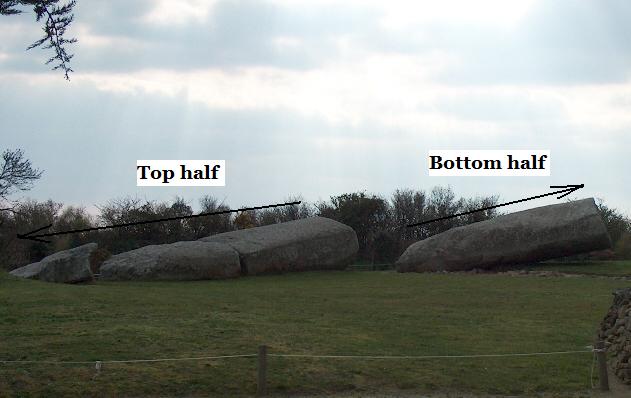
The location, and size of the other missing stones are a matter of speculation but there are several likely candidates in the immediate surrounding countryside. The several phases of construction at Carnac offering the tantalising possibility that (some of) these other stones may be the missing ones from the original Morbihan monument.
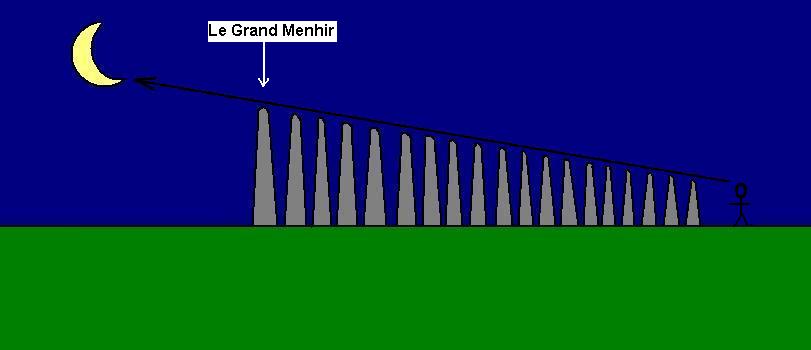
The Kergadiou Menhirs:The Spectacular Kergadiou Menhirs (8.75m and 11m)
The Kergadiou menhirs were inter-visible with the Kerloas menhir, the ocean and several other menhirs in the vicinity, The extreme height and proximity to the ocean of many of the Brittany menhirs makes it possible that these particular examples may have been erected with navigation in mind. It is interesting to note that the same cannot be said of the opposite English coastline, even though tradition claims an English origin for the stones, suggesting a connection in the distant past.
Other Menhirs in Brittany.
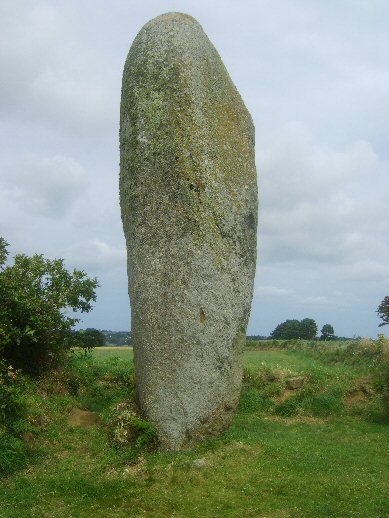

Llanoulouarn 4m (left), Coulnandre 3m (right)
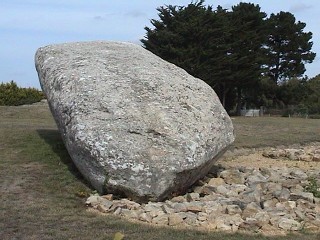 Menhir Facts – It was common practice with large European menhirs\standing-stones to shape the bottom end of the stone into a ‘keel’ as seen in the photo (right), of Le Grand Menhir Brisé in France.
Menhir Facts – It was common practice with large European menhirs\standing-stones to shape the bottom end of the stone into a ‘keel’ as seen in the photo (right), of Le Grand Menhir Brisé in France.
Features such as this are a tribute to the advanced understanding of engineering possessed by the megalithic builders.
(Other examples of Prehistoric Construction Techniques)
British Standing Stones.
The British landscape still possesses several hundreds of standing-stones. They have been the cause of much study and have been associated with ley-lines, astronomy, geometry and territorial markers, although it is probable that many of the larger stones have been re-used for different purposes since they were first placed.
The Rudstone Monument - At 7.8m high,this is the largest standing-stone in England. The Rudstone complex includes several important prehistoric landscape features such asCursus’ and beacon hills, both landscape features traditionally associated with astronomy.
The ‘Devil’s
Arrows’ - Three standing-stones with grooves carved into the tops and sides. The stones are almost aligned, but not quite, reminiscent of the many ‘triple-circles’ in UK showing the same layout. Having said they are not perfectly aligned, they are orientated towards the nearby Thornborough complex (three henges) on the Ur-Swale plateau, several miles north. The Thornborough complex also includes a Cursus and the region claims at least six of the
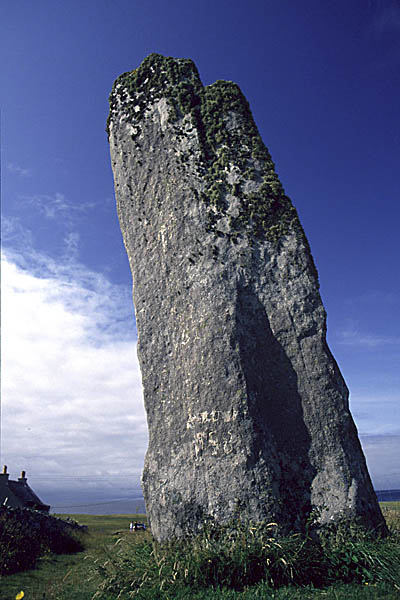
largest henges in England.
Clach-an-Trushal – The largest standing stone in Scotland. At over 6m tall this stone has no historical context, although it is believed that there may have once been other structures at the site.
Portuguese menhirs.
There are several large menhirs still standing in Portugal, including the largest in all Iberia at just over 7m.
Menhir da Meada: The tallest menhir in Portugal and all Iberia. This stone is just over 7 metres tall and is situated near Castelo de Vide, along with over 50 other megalithic remains.
The ‘Rochoso menhirs’: Originally four columns and part of an unknown monument, these two slender stone pillars are all
that remain today.
Almendres Menhir: This stone is believed to have been a solstice marker in relation to the nearby Almendres stone circle, one of Portugal’s prehistoric gems. It is located in the
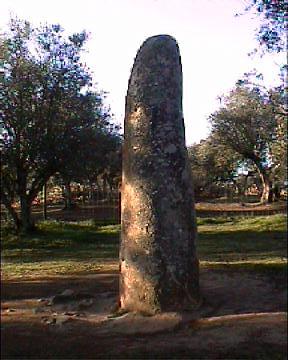
Evora region of Portugal, which as well as having an astronomical significance, has been continuously occupied for 20,000 years.
The Monsaraz menhirs:
There are several substantial menhirs in the vicinity of Monsaraz, most noticeably those at Xarez, Outeiro and Bulhao, although several others are recorded in the same region.
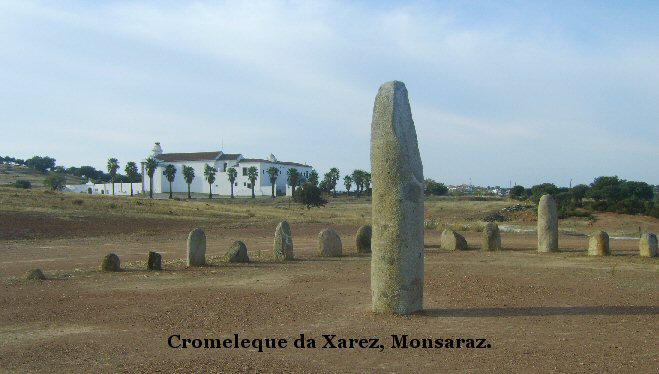
The Xarez menhir is unique as it stands in the centre of the Cromeleque da Xarez, which was relocated from its original location 5km south to its current position beside Monsaraz itself following the construction of the nearby dam in 2002. The cromeleque da Xarez has been suggested as being part of a 50km lunar alignment (corridor of incidence), which includes other noticeable sites such as Almendres and Zambujeiro.
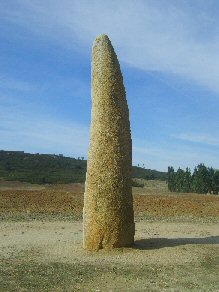
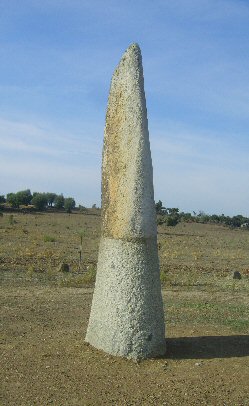
Not far to North of Monsaraz are the Outeiro and Bulhao menhirs. The Outeiro menhir is the second tallest in Portugal and the heavily decorated Bulhao menhir is one of the oldest recognised structures in the region.
Menhir Gallery.
Other menhirs, obelisks and standing-stones from around the world.
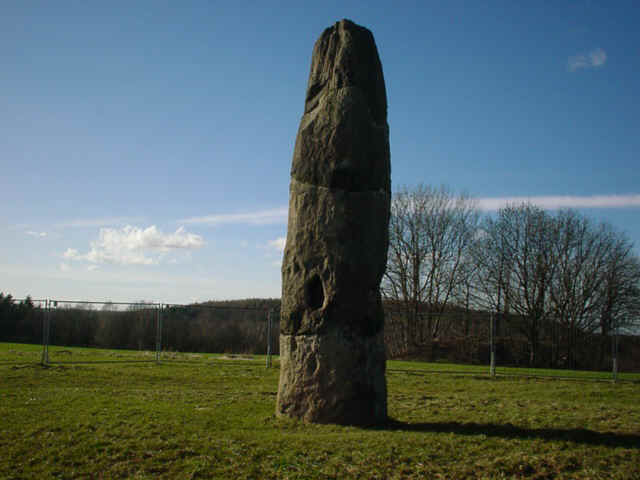
The tallest menhir in Germany. The Gollenstein (Golden stone). Height 7.6m high. Broken and re-erected.
The tallest menhir in Switzerland. Menhir d’essertes Auborange – Height 5.6m (25 tons).
The tallest menhir in Switzerland. Menhir d’essertes Auborange – Height 5.6m (25 tons).
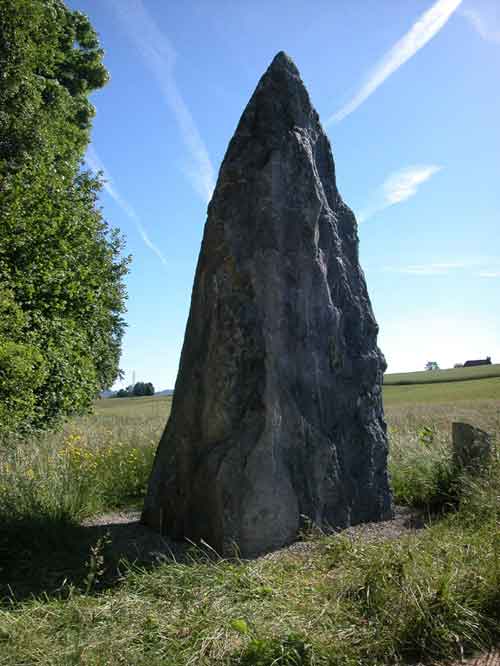
Sursa:
=====================
=====================================
-----------------------------------------------------------------------------
---------------------------------------------------------------------------------------------------
----------------------------------------------------------------------------------------------------------------------

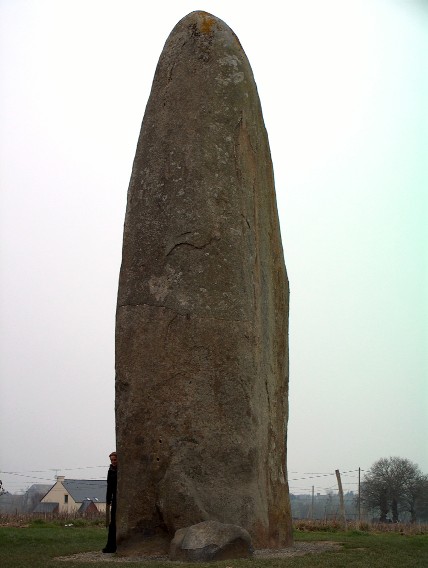
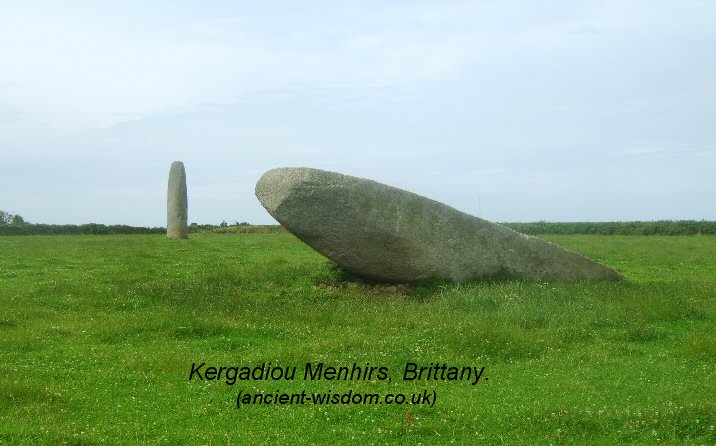
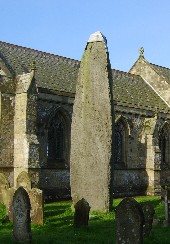
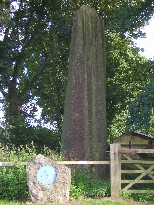
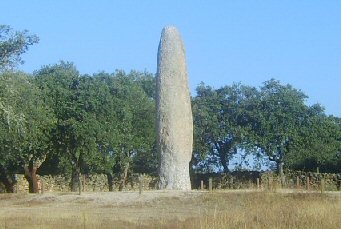
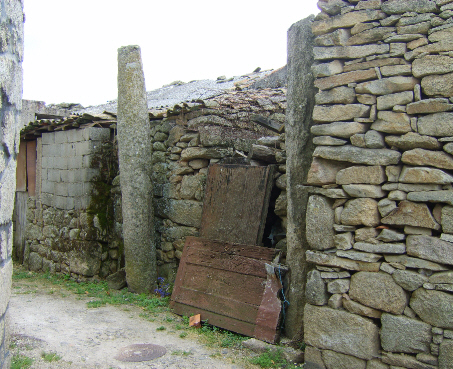
Obeliscul şi adorarea principiului masculin
RăspundețiȘtergere-----------------------------
Obeliscul are o formă arhetipală unică, este un simbol al puterii creatoare masculine. Conform tradiţiei, el era construit dintr-un singur bloc de piatră, avea patru feţe care se îngustau spre vârf, iar deasupra o mică piramidă numită în vechime “Piatra Benben”. Aceeaşi “Piatră Benben” este şi piatra unghiulară a piramidelor. Specialiştii în istoria Egiptului spun că această piatră este “dealul primordial”, adică vârful primului uscat care a apărut din ape la crearea lumii, de după el răsărind pentru prima dată Soarele. Prin mica piramidă din vârf, obeliscul se diferenţiază deci de simplele coloane sau piloni şi aminteşte într-un mod explicit de forma organului sexual masculin. Acest aspect a fost observat încă din vechime, chiar şi în creştinism. De exemplu, în 1650, cărturarul iezuit Athanasius Kircher numea obeliscul, în lucrarea sa Obeliscus Pamphilius “digitus solis - degetul Soarelui”, formă voalată de a se referi la simbolismul său sexual.
În perioada timpurie a Egiptului, obeliscurile erau construcţii sacre dedicate Soarelui–Ra, principiul masculin, ale cărui raze penetrau pământul şi astfel îl făceau să fie fertil şi plin de vitalitate. Forţa creatoare masculină a lui Ra era atât de mare încât egiptenii considerau că razele sale ajungeau până sub pământ şi făceau posibilă învierea morţilor. În timpul celei de-a cincea dinastii, Ra era atât de popular încât devenise un zeu al întregului Egipt, iar oraşul On (mai bine cunoscut nouă sub denumirea lui grecească Heliopolis era plin de obeliscuri ridicate pentru adorarea lui.
Cu timpul faraonii nu au mai ridicat obeliscuri pentru Ra, ci pentru Osiris: “Osiris era zeul pământului, vegetaţiei şi revărsării Nilului care dădea viaţă Egiptului, zeul renaşterii, al lumii de dincolo, al ultimei judecăţii, al vieţii şi morţii. Pe măsură ce cultul său devenea tot mai popular, preoţii din Heliopolis l-au înglobat pe Osiris plini de şiretenie în ritualul de adorare, pretinzând că Osiris este nepotul lui Ra. Astfel, s-au asigurat că Heliopolis va rămâne cel mai mare centru religios al Egiptului şi al întregii regiuni mediteraneene”
Masonii şi obeliscul
RăspundețiȘtergere---------------------------
“Masoneria are printre emblemele ei, pe aceea în care o femeie plânge deasupra unei coloane frânte, ţinând în mâini ramuri de salcâm, în vreme ce Timpul în spatele ei îi piaptănă părul. Nu este nevoie să repetăm câte explicaţii insipide şi triviale au fost date acestei reprezentări a lui Isis, plângând la Biblos, deasupra coloanei frânte din palatul regelui, care conţine trupul lui Osiris, în timp ce Horus, zeul timpului toarnă ambrozie pe părul ei” (5). Aceasta este interpretarea dată de Albert Pike, în Morală şi Dogmă cunoscutei embleme masonice pe care o vedeţi în imaginea alăturată. Dincolo de încercările acestui cunoscut maestru mason de a descuraja interpretările sexuale ce derivă automat din imagine, aflăm un lucru important. Că Isis şi Osiris sunt figuri centrale în simbolismul masonic.
Unii istorici masoni consideră chiar că încă din secolul XVIII obeliscul era pentru masoni un simbol arhitectural al lui Osiris reînviat. Unii dintre ei pretind chiar că Hiram este Osiris renăscut, şi aşa aflăm versiunea masonilor asupra fiinţei care a posedat trupul lui Osiris după reînvierea acestuia.(6) Aceasta explică şi de ce mormintele masonilor de seamă au obeliscuri în loc de pietre funerare, deşi în Egipt obeliscurile nu aveau o funcţie funerară. Ele erau ridicate întotdeauna în pereche pentru a proteja intrarea în temple. Intrarea la mormântul lui George Washington de exemplu, respectă această tradiţie fiind străjuită de două obeliscuri. Trebuie spus că acest mormânt a fost construit urmând indicaţiile precise ale lui Washington, a cărui apartenenţă la masonerie nu a fost niciodată un secret. Şi alte morminte masonice poartă aceeaşi amprentă.
Ce caută un obelisc egiptean – simbol falic şi satanist – în mijlocul pieţei Sf.Petru din Vatican?
RăspundețiȘtergere----------------------------
În mijlocul pieţei Sf.Petru, chiar în faţa Vaticanului, se află un obelisc înalt de 25 de metri. Deşi are o cruce în vârf, acest obelisc egiptean este unul păgân şi este ciudat cum un simbol falic se află chiar în mijlocul sediului Bisericii Catolice.
Acest obelisc, înălţat spre aşa-zisul zeu al „soarelui” şi care ar fi simbolizat venerarea panteistă a forţelor naturii, a fost mutat de la Heliopolis la Roma între anii 37-41 d.Hr. de către Caligula, în piaţa sa de pe Colina Palatină. În 1586, pentru a asigura amplasarea acestui obelisc exact în centrul catedralei, a fost mutat la ordinul Papei Sixtus al V-lea pe o distanţă scurtă până în locaţia actuală: Piaţa Sfântului Petru. În acele zile, mutarea acestui obelisc masiv era o sarcină extrem de dificilă, mai ales dacă ţinem cont de PEDEAPSA CU MOARTEA pe care papa o promisese oricui ar fi fost vinovat de căderea sau vătămarea lui…
În fine, un bărbat numit Domenico Fontana a acceptat responsabilitatea mutării şi ridicării obeliscului din Vatican. Cu ajutorul a 160 de cai, a unei echipe de 800 de muncitori, după 45 de zvâcniri, mutarea a început! Era 10 septembrie 1586. O mulţime de oameni umplea piaţa. Sub ameninţarea pedepsei cu moartea, mulţimea a aşteptat în linişte în timp ce mutarea avea loc. În final, după aproape un eşec, obeliscul a fost ridicat în uralele mulţimii, sunetul clopotelor şi bubuitul tunurilor. Romanii au sărbătorit, iar papa a binecuvântat muncitorii şi caii acestora.
Obeliscul babilonian aflat odată în Heleopolis, centrul cultului egiptean al soarelui, era o copie a obeliscului din centrul Babilonului, dacă nu obeliscul însuşi. Există multe simbolistici oculte asociate acestui obelisc, în jurul căruia antica religie misterioasă din Babilon a fost ţesută, unul dintre acestea fiind o reprezentare simbolică a Turnului Babel. Obeliscul se afla în mijlocul unei păduri circulare (pădure circulară de piatră, în cazul Romei), sugerând venerarea uniunii dintre „principiile” bărbăteşti şi cele femeieşti, mai degrabă decât a CREATORULUI, acesta este indicator al divinizării CREĂRII (sau „Creaţiei).
Într-adevăr, simbolul falic, şi întregul Vatican, a fost ridicat pe acelaşi deal numit „loc de divinaţie” (Vaticinia) în Roma antică precatolică. Se spune că numele vine de la numele unui „zeu” păgân antic numit „Vaticanus” aşezat pe sau sub acest deal, căruia profeţii antici i se împărtăşeau.